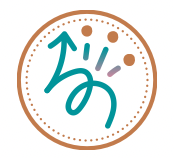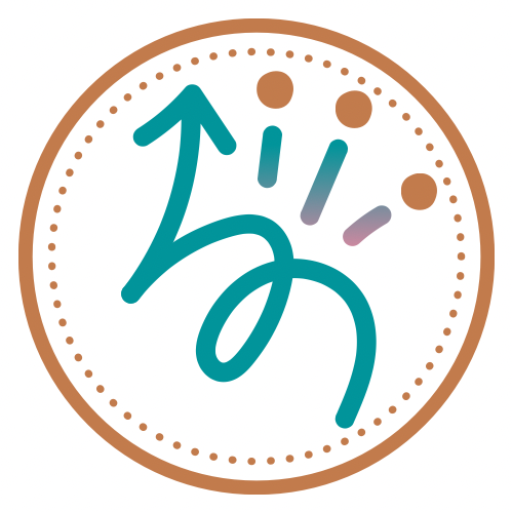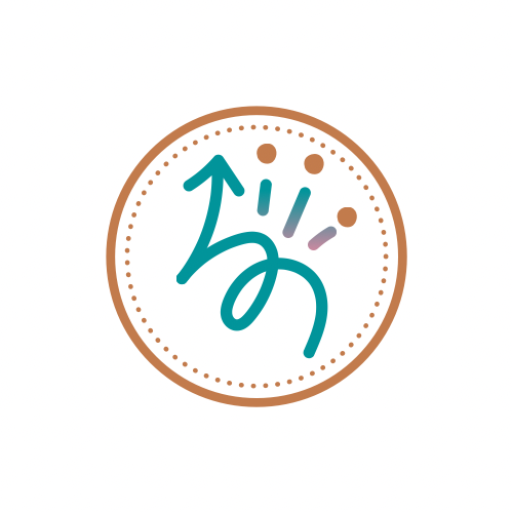DIY Sock Aid: A Daily Living Dressing Device (small foot size)
Sock aids help people gain independence in lower body dressing by providing assistance while putting on socks. This type of assistive device gives individuals an easier way to put on socks when upper body (reach) and hip (bend) range of motion are limited. This daily living aid takes about 20 minutes of hands-on time and is specifically designed for the older child, young teen, or for adults with a smaller than average size foot. Let’s get started.

The DIY Sock Aid
This sock aid tutorial has been one in the making. It’s taken several attempts to find the just right plastic bottle as far as size and strength of the plastic. If the plastic isn’t strong enough it collapses in on itself once a sock is placed on the device. Once I found a strong enough repurposed plastic (the Gatorade bottle), I tried adding a non-slip shelf liner on the backside of this daily living dressing aid which was a game changer for being able to consistently pull on socks on over the heel. After many trials, finding the right glue for the liner, and securing the handles with a metal washers, needless to say, the DIY sock helper works great. So glad to get this sock aid tutorial out into the world….FINALLY.
What Is A Sock Aid?
A sock aid, also known as a sock donner, sock helper or sock dressing tool, is an assistive device that allows the user to put on socks more easily when pain or physical limitations are present. This type of daily living aid is made with a U shaped piece of plastic attached to pull cords.
Some purchased devices have built up foam handles attached to the cords which provide a wider gripping surface while helping to reduce stress and strain on the joints of the hands when putting on socks.
This simple piece of assistive technology can make a big difference in the lives of individuals wanting to be more independent in dressing. Plus, for some individuals using the sock aid can be less time consuming while also conserving energy.

When Can A Sock Aid Be Helpful?
The sock aid helps to compensate for reach, balance, and movement differences allowing the user to be more independent without overstretching or overstraining after an injury or surgery such as knee, hip, or back surgery. Furthermore, this daily living aid can be helpful for those who want to gain more independence in putting on socks. This type of assistive device may also benefit seniors and older adults who want maintain or increase their independence in dressing skills. However, this DIY sock aid should only be used by individuals with a smaller sized foot. For those with a wider foot, this DIY sock aid design may be too tight for you.
A sock aid may be beneficial for children or adults who experience:
- Decreased reach and balance
- Recovering from surgery such as back surgery, knee replacement surgery, or hip surgery
- Improve energy conservation
- Differences in hip range of motion
- Fine motor strength and/or dexterity differences
- Hip joint damage or pain
- Children with differences in movement and/or fine motor dexterity
- During stroke recovery
- Muscle tone and strength differences
- Experiences pain
- Arthritis
- Stroke recovery
- Older adults and seniors
- Recovering from injury
- Difficulty putting on socks
* Contact your personal occupational therapist to find out if this device is right for you.
Foot Size And The DIY Sock Aid
This DIY sock aid tutorial which uses a Gatorade bottle, fits a smaller sized foot. This DIY sock aid will work well for older children, young teens, and teens/adults with an smaller than average size foot. If you have a wide foot, you will need to change the type of plastic base you use for the device so that it fits a wider foot better. Make sure the DIY sock aid is not too tight around your foot.
* Contact your occupational or physical therapist to see if the DIY sock aid will work for you.
The DIY sock aid works best on an smaller than average size foot. A wider, sturdy plastic bottle may be needed in order to use the DIY sock aid with a wide foot for better comfort and ease of use.
How To Use A Sock Aid



To use a rigid sock aid, two-handed, place a sock over the opening furthest away from the handles and slide the sock all the way up to where the handles attach. Make sure the toe of the sock is flush with the device. Drop the sock aid to the ground while maintaining your grasp on the handles or pull cords and place your foot in the sock opening. SLOWLY pull the handles to slide on over the heel. Keep pulling the sock aid by the handles to remove the device from the sock, SLOWLY. Repeat for the other sock.
How To Remove Socks?
Unfortunately, the sock aid does not provide any assistance with sock removal. However, you can use a long handled shoe horn or my DIY version of a dressing stick to remove socks with ease. The DIY dressing stick or a reacher may also be beneficial for you so that you can easily pick up socks from the floor without the need to bend over and reach to the floor.
Features Of The DIY Sock Aid
Here are some of the features, pros and cons, of the functionality of the DIY sock aid that I would like you to be aware of before making this sock aid.
Features/Pros:
- This sock donner is designed for the older child, young teen, or someone with a narrow, smaller than average adult size foot.
- Works well as a two-handed device
- Easily place socks on the device using both hands.
- Pull the socks on SLOWLY using the device so that the sock pulls on over the heel.
- Add built up foam handles for a better gripping surface.
- If needed add padding (layers of duct tape) to the inside to decrease any pressure points the ankle bones. See pictures in the “instruction” section.
- Round and tape the edges on the device to help prevent scratches
- Added metal washers on the topside and underside of each pull cords where they attach to the plastic to prevent the pull cords from tearing the plastic while in use.
Cons:
- If you have a wider foot, this sock helper may not work for you. In this case, experiment with a stronger, wider plastic containers that will provide you with a wider sock aid. Cutting a slightly wider opening in the bottle may help, though in my experience, if you cut too wide of an opening, the sock will not pull on over the heel. This sock aid is designed for the older child, young teen or adult with a narrow, smaller than average adult size foot.
- If you pull the sock donner too fast, it will have difficulty pulling the sock over the heel.
- Over time and use, you may have to replace the non-slip shelf liner and/or remake the entire sock aid if the pull cords have torn the plastic bottle. Although the metal washers help with this.
Can This Sock Aid Be Used One Handed?
No, this particular sock aid is not typically used as a one handed device because of the rigid plastic makes it difficult to place a sock on the device. This is also true for most rigid plastic sock aids that can be purchased. However, there is a different type of sock donner available for one or two handed use made with a special, flexible terry cloth material. Check out the Fanwer Sock Aid Tool which allows the user to more easily place a sock on the donner using only one hand. Here is a video by EquipMeOT using the sock aid in action one handed.
Other Types Of Assistive Daily Living Aids
If you or a loved one are considering using an assistive device, occupational therapists are a great resource in figuring out which device is a good fit as well as making adaptations for use. Here is a list of some other types of daily living aids that may help gain independence in activities of daily living (dressing, eating, toileting, bathing):
Daily Living Aid Tutorials on The DIY Therapist blog:
- Long handled sponge
- No-sew universal cuff
- Button hook and zipper pull
- Velcro Fasteners on shirts
- Built up handles
- Long handled utensil
- Dressing stick
- Leg Lifter
Other daily living aids that might be helpful:
- Reacher
- Elastic shoe laces
- Adaptive feeding utensils, plates and cups
- Bra Aid
- Adaptive clothing from Target, JC Penney, Tommy Hilfiger, magnetic clothing closures from MagnaReady
- Long handled shoe horn
- Toilet tissue holder
- Universal cuff
Important Note On The Sock Aid and Physical Rehabilitation
It’s important to note that when using assistive daily living aids such as a sock aid or leg lifter, the main goal during the rehabilitation process is to become as independent as possible with daily routines. In certain circumstances, some individuals will need to continue using the sock aid while dressing long term depending on their situation, and/or therapist or doctor recommendations.
However, if you are recovering from an injury or surgery, it is important to continue working on rehabilitation exercises as prescribed by your rehab team with the goal towards independence; therefore, no longer requiring the use of the sock aid.
Continue with your strength and range of motion exercises as recommended by your rehab team. Overall, being independent in your daily activities is the ultimate goal, not continuing to use the sock aid when it’s no longer needed. Discontinue use when recommended by your occupational or physical therapist or doctor.

Considerations Before Making The Sock Aid
- Use caution while using a box blade. If you are not comfortable using a box blade, make sure to ask a friend or family member for help.
- Box blades are for adult use only, not children.
- The DIY sock aid is not intended for young children under the age of 3 years or for anyone who chews on non-food items as the metal washers and duct tape are a choking hazard.
- Carefully use the super glue being careful not to get any on your skin.
- Duct tape brand has better adhesive. Make sure to purchase the duct tape brand, not an off brand that does not have as good adhesive.
- The sock helper I made works well for older children, young teens, or adults with a smaller than average foot. A larger, sturdy plastic container may be needed for those with a wide foot.
- Round the edges of your sock aid to prevent scratches and cover all edges with duct tape.
- Add built up handles using either foam tubing or a pool noodle, although this is optional.
- The length of my handles are 17-18 inches which is based the length I personally needed in a sitting position. You may need longer or shorter handles based on your needs and comfort as well as the user’s age.
How To Make A Sock Aid
Materials
- Box cutter
- Scissors
- Duct Tape, use the duct tape brand for better adhesive
- Phillips head screw driver, or other tool of choice, for making a hole for the size rope or strap you will be using
- Non-slip shelf liner
- Super glue
- 28 fl. oz. plastic Gatorade bottle, label discarded (emptied and rinsed)
- Thin soft rope, straps, cords, or strong yarn (the yarn can be braided to make larger, stronger pull cords), length based on your needs
- 4 metal washers based on the size pull cords you are using
- For a wider gripping surface use built up foam tubing or a pool noodle, optional
- Optional, flexible weights, such as a bag of dried beans, used to lay over the sock aid while the super glue is drying
- Match or lighter to singe the end of the rope cords, optional
Picture Tutorial










Instructions
- First, carefully cut off the top and bottom curved edges of the Gatorade bottle using a box cutter as seen the in the picture. Leave as much of the bottle intact as possible.
- Trim the edges using scissors if needed.
- Next, cut out an 2″ portion down the middle of the Gatorade bottle using scissors to separate the left side from the right.
- Round all sharp edges using scissors.
- Create holes on the top two corners of the sock aid (not too close to the edge) for your rope handles using a Phillips head screwdriver. Make larger if needed, based on the size of your pull cords. Do not cut slits into your Gatorade bottle using the box cutter as this can cause the pressure on the handles continue ripping the plastic during use.
- From the outside, place rope handles through the holes. Add washers to the underside and topside of the sock aid to secure each pull cord. Tie a knot as seen in picture on the inside.
- Next, secure the washer in place with super glue making sure it is flush with the plastic. Do not to get glue on your hands. Use a screw driver to hold in place if needed and let dry.
- To secure the washers further, add additional duct tape surrounding the washer, holding each in place.
- If using rope, singe the ends using a match or lighter, or alternatively tie a knot on the handled end to secure any loose ends.
- Cover the Gatorade bottle with short strips of duct tape, making sure all edges are covered. Smooth and press all duct tape.
- Glue a 2×3 inch piece of non-slip shelf liner to the bottom side near the toe portion, as seen in picture, using super glue. Let dry completely. Add additional super glue to any loose edges. Let dry again. Use a bag of dried beans to hold in place while drying.
- Lastly, cover each side of the non-slip shelf liner with strips of duct tape to secure as seen in picture.
- Optional, attach built up foam handles by securing at the end with a knot as seen in picture based on your preference. Trim any excess rope/straps based on your needs. Tie a knot to secure any loose ends if needed.
- Optional, if needed, add small layered or folded strips of duct tape to any pressure points and secure with duct tape on the inside.

Resources
- The Fanwer Sock Aid Tool is a sock donning dressing aid that can be used one handed as well as with two hands. Rigid sock aids made with hard plastic are difficult to use as a one-handed device.
- Equip Me OT’s video demonstration on how to use the Fanwear Sock Aid Tool one handed.
- Built up foam tubing for the handles or try a pool noodle found locally.











